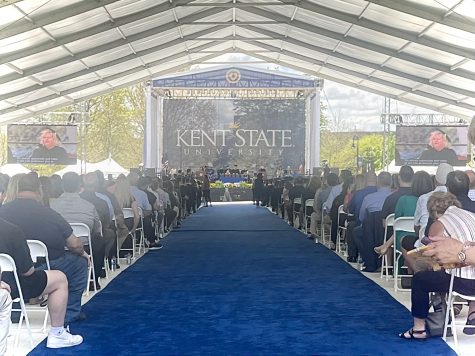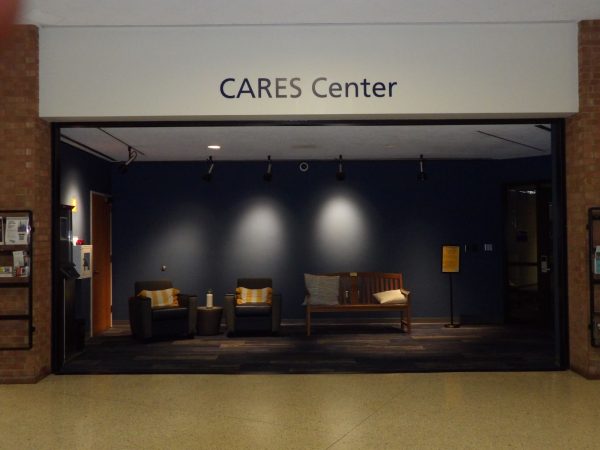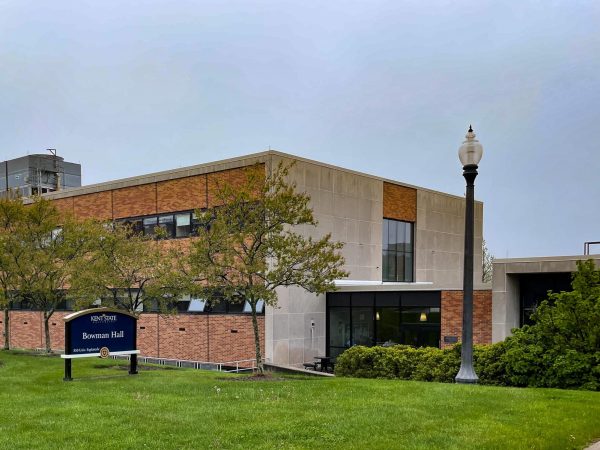Cultural barriers between students on campus
December 4, 2020
The U.S. has always been the top destination for international students to study in. But the interaction between international and domestic students is very limited due to a number of obstacles.
Cultural barriers like political opinions, physical appearances, language and a lot of other things can affect the communication for students coming from different cultures.
Sarah Malcolm, the executive director of the office of global education, has experienced studying abroad in a foreign country. She said she used to force herself to meet and talk to new people every day to get that studying abroad experience.
“People need to put themselves out there a little bit more, both international students and American students. Because we can only gain so much from this global and diverse interaction,” Malcolm said. “I think it’s just a positive thing you’re learning when you’re interacting with American students and American students learning when they’re interacting with international students.
One important obstacle that international students face when they study abroad on their freshman year is the language barrier. it makes it harder to communicate with American students because communication becomes difficult in situations where students don’t understand each other’s languages.
Since language is the most common barrier, it creates a lot of misunderstandings and misinterpretations between students from completely different cultures.
“One of the hardest things about being in a new culture is that you have to push the boundaries of what’s comfortable for you,” Malcolm said. “Some students are very nervous about their language. So they’re nervous to try it. They’re afraid that if they don’t speak English perfectly, people won’t understand them. And so that makes them nervous and they’re afraid to go and talk to people.”
Amrita Datta a 22-year-old visual communication design major from India, said that it was frustrating for her when her fellow students couldn’t pick up on her accent whenever she spoke, although English is her first language.
“It was very hard for me when my professors or my friends could not understand me. You kind of lose track of a conversation when they’re saying, oh, pardon me. Oh, sorry or what did you say? you can’t hear them or understand them,” Datta said. “So, I think that is a difficulty for students.”
Bruno Beidacki, a 23- year-old earning his master’s degree in journalism, had a rough time not only with the language but also, with the topics that his American friends talk about.
He didn’t understand how universities work in the U.S. or what a sorority or fraternity mean.
“I think at the very beginning it was hard because my English wasn’t as strong and a lot of times if I was speaking to groups of people it would be hard to get my point across because there’s a lot going on and maybe they are all talking about something that I’m not really aware of,” Beidacki said. “And then it’s hard for me to participate instead of just asking questions.”
David Chou a 30-year-old is in the EDS program (Educational Specialist In Higher Education Administration And Student Affairs) said he feels it’s easier to communicate with international people like him. And the reason behind that is they have been through the same things and it’s easier to find topics to talk about.
“Because you are from the same culture, same customs and traditions,” Chou said. “You know how to interact with people from your country without any problem.”
Common interests can be hard to find when coming from two extremely different cultures and traditions, so students are afraid to put themselves out there and explore the similarities.
Abdullah Albahlouli, a 20-year-old accounting major, had some trouble interacting with domestic students at first because he was surrounded with international students in the English As a Second Language program.
“When I was in ESL I wasn’t able to reach Americans because all it was all international students in the program. And even when I go play soccer it was all people from all around the world but not Americans.” Albahlouli said. “I didn’t get to meet a lot of people my first year here.”
Americans may at times feel like it’s hard for them to approach international students and communicate outside the classroom because they think they’re not familiar with the culture. And that creates a divide.
“Even though I might understand the jokes or the conversations, but just from my perspective, I felt left out and kind of felt like why can’t I be a part of the conversation or why can’t they talk to me about the same things that they are talking about with each other,” Datta said. “I think that’s where the disconnect is at times.”
Kent State University has been sending students to study abroad in Italy to give its students an eye-opening experience in studying in a foreign country. But students are not getting that full experience.
Sophia Schwind, a 21-year-old visual communication design major, had the opportunity to study abroad and experienced being international in another country.
She said that Kent State has their own campus in Florence, Italy. And classes are taught by Kent State faculty. So she didn’t have a lot of Italian student interaction.
“In Florence, I didn’t have a whole lot of interaction with a lot of Italian students,” Schwind said. “But we had the opportunity to study about the refugees. So we at least we’re discussing that.”
In today’s age and time people are being judged by their appearances. Prejudices can affect the way people treat you or the way you treat people. And that creates some unfair assumptions based on physical appearances.
Maryam Almadani, a 22-year-old Nutrition major, said she had a hard time adjusting with life in the U.S. because she wears a headscarf, and people at times didn’t accept her.
“I think people avoid me because I’m wearing a headscarf. Or maybe they’re afraid that my English is not that good. Also, there are a lot of people who have a stereotype about Muslims being terrorists and dangerous,” Almadani said. “So, they prefer to avoid instead of interact.”
People can choose to change some aspects of their personal physical appearances, such as clothing and hairstyles, but not their skin color or what they look like.
Some international students can get insecure about their appearance because they look different than most of the people they study with in the U.S., especially Muslim women who have to cover up their skin and hair.
Natalie Hillyer, a 21-year-old applied communications major, said that the lack of communication is based on fears from both ends, that both have never had a friend that looks different from them. Or maybe they’re uncertain of the other person’s views.
“I can’t imagine what it is like to have the hijab as a barrier. because I can only imagine that has to be such a barrier because it’s more symbolic than just being maybe a different shade or color or having a slight accent,” Hillyer said. “In a sense, they might seem scary or unapproachable, but I think it’s almost like a self-fulfilled prophecy because if you don’t approach them, they’re not going to be approachable.”
To make effective communication, cultural communication barriers must be eliminated. Cross cultural understanding must be increased in learning facilities as it decreases communication barriers caused by cultural differences.
“Meeting people from new cultures and new countries will broaden your mind and hopefully you’ll learn that. We all share certain commonalities, but we have differences and we can celebrate those differences together and to invite international students out,” Malcolm said. “So maybe you’re afraid to talk to an international student, but just invite them to lunch or invite them to the rec center to work out or whatever activity you’re going to and get to know students.”
Contact Sara Al Harthi at [email protected].























